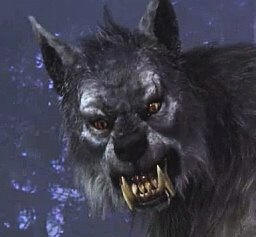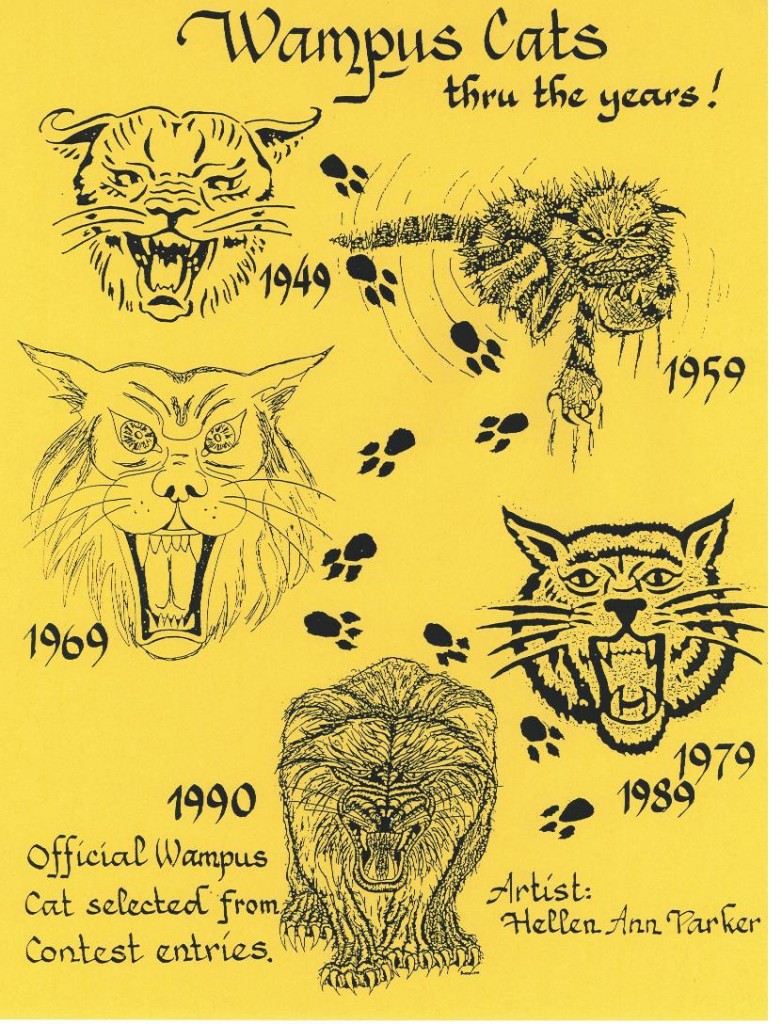Wampus: Mystery Cat, Swamp Monster, or Booger Bigfoot?
Posted by: Loren Coleman on June 12th, 2012
Not to be confused with the Star Wars Wampa, let’s discuss the Wampus.

Wampus of the Cherokee: What is it? Werewolf, mystery cat, booger?
One of the name games I’ve investigated is the weirdness-linked place moniker “Wampus,” which can be found around the country. George R. Stewart’s American Place Names (NY: Oxford University Press 1970) has this for “Wampus”: “In NY the pond is from the name of a local chief. In OR the butte is from a legendary monster of the forest.” (p. 520)
I have found in old Southern newspaper accounts that “Wampus” was a name used for an unknown monster cat as well as other mystery animals. It is very akin to how the name “Booger” was used, mostly for hairy unknown primates’ habitat in that case, but sometimes for mystery panther haunts, as well. Henry Franzoni has found a total of 18 places in the US and Canada named for Wampus, including Wampsville NY, and Wampos lake in Saskatchewan.
Whereas I usually relate the name Wampus to felines, Franzoni points to a connection with the big hairy fellows and not ‘phantom panther’ sightings in particular. He notes the word catawampus (cattywampus), which means “Cater-Cornered; slant wise, or Evil; malicious” in the American Heritage Dictionary, seems to be a neutral piece of evidence. However, around Oregon, a Wampus is “legendary monster of the forests” (from page 881 of Lewis A. MacArthur’s 1992 sixth edition of Oregon Geographic Names), which Wampus Butte, the Town of Wampus, Wampus Post Office, Wampus Campground, Wampus Springs, and Wampus Cat Canyon in the Warm Springs Nation are all named for in Oregon.
Still, the feline connection is there, as five high schools in Oklahoma, Idaho, Texas, Arkansas and Louisiana use Wampus Cats as their mascot. The Wampus cat is a creature in American folklore, variously described as some kind of fearsome variation on a cougar, according to standard definition.
The Wampus cat is the mascot of the following:
E. Randall Floyd’s Great Southern Mysteries summarizes the story of the mysterious wampus cat. Early pioneers visiting the South went back East with all sorts of tales of terrifying beasts and swamp creatures they had allegedly encountered in the woods and waters of the region. Among these creatures was a particularly savage beast called the Wampus Cat, an animal reported to roam the Southern bottomlands and described as “an impossibly hideous critter said to have the head of a man, the body of a wildcat only larger, and the soul of a demon.”
The Wampus Cat, according to Floyd, was known to lurk along murky river bottoms and feast upon hapless hunters, fishermen and travelers and anybody else who wandered too far away from civilization. Although common in the early 19th century, wampus cat stories and sightings became less and less frequent after the War Between the States. A reminder of their former reign of terror lies in the names on the land.

Conway Public Schools is a school district located in Conway, located in Faulkner County, Arkansas. Their mascot is the Wampus Cat.

The Wampus Cat is the mascot of the Atoka High School, Atoka, Oklahoma.
For more on another name game, see the “Fayette Factor.”
About Loren Coleman
Loren Coleman is one of the world’s leading cryptozoologists, some say “the” leading living cryptozoologist. Certainly, he is acknowledged as the current living American researcher and writer who has most popularized cryptozoology in the late 20th and early 21st centuries.
Starting his fieldwork and investigations in 1960, after traveling and trekking extensively in pursuit of cryptozoological mysteries, Coleman began writing to share his experiences in 1969. An honorary member of Ivan T. Sanderson’s Society for the Investigation of the Unexplained in the 1970s, Coleman has been bestowed with similar honorary memberships of the North Idaho College Cryptozoology Club in 1983, and in subsequent years, that of the British Columbia Scientific Cryptozoology Club, CryptoSafari International, and other international organizations. He was also a Life Member and Benefactor of the International Society of Cryptozoology (now-defunct).
Loren Coleman’s daily blog, as a member of the Cryptomundo Team, served as an ongoing avenue of communication for the ever-growing body of cryptozoo news from 2005 through 2013. He returned as an infrequent contributor beginning Halloween week of 2015.
Coleman is the founder in 2003, and current director of the International Cryptozoology Museum in Portland, Maine.










That picture is from “Van Helsing”. Awesome movie
In the Appalachian region the term “wampus” and “catty wampus” is also a colloquial term for a woman’s private parts.
In this use, it is tied indirectly to the catty wampas cat creature, in that the earlier usage of the metaphor refers specifically to a toothed vagina. Tales of toothed vaginas represent a universal archetypical fear of castration, and are found in native american folk tales (as well as other areas of the world). In some areas the catty wampus animal has some human (female) features to lure the men to destruction.
The modern (toothless) derivative of the sexual usage of the term is usually described by women themselves to denote their level of sass or rebellion.
It would be interesting to go over some of the native american witch tales (toothed vagina stories) and see if there is a tenuous thread from the witch to catty wampus or cannibal giants or sasquatch, etc.
…also interesting is that while both the native american tales and the appalachian (german and scotts-irish) tales usually deal with half cat, half woman creatures, most of the modern tall tales of wampas encounters by hunters usually describe a very “bigfoot” like run-in… large, nocturnal, hairy, dog-hating beast that stinks and sometimes shrieks.
I went to college in Norman OK with a guy from there whose middle name was Wampus. He had bumper stickers made up that said “Phi Delta Wampus” and a bunch of us had them on our cars instead of the almost obligatory fraternity letters so common at OU. This was back in the mid to late 80s.
A ‘wampus’ terrorized our Boy Scout summer camp year after year in the early 1970s in mid-Wisconsin. They told us it was part wolf, part bat, and part bobcat. I can never forget the sound it made outside our tents in the middle of the night… we were about 12 years old at the time. One night we finally gave chase and caught up with the older scouts who were the ‘wampus’. Their noisemaker was a good one: an empty metal 3 lb coffee can with a piece of pine-sap coated string through a hole in the one end. When pulled through it made an unearthly screech or growl, depending on how fast you pulled it.
I have only heard of wampus used in reference to cougars or panthers (tan or black) or possibly, abnormally large bobcats. The use of woolly booger as a reference to a toothed vagina. The only use for woolly booger is to describe unknown creature that inhabit the dark. This could be any creature from a panther to a bigfoot.